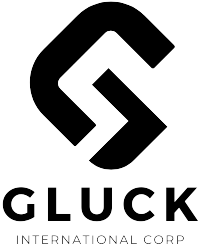Introduction
In the era of globalization and technology, businesses have undergone significant transformations. Conventional business is a model that has existed for centuries and relies on physical interactions, such as face-to-face transactions and promotions through conventional media like brochures, print advertisements, and others. On the other hand, digital business is a business model that relies on information technology and the internet to conduct its business processes, such as e-commerce platforms, digital marketing, and online customer services.
Conventional and Digital Businesses
Conventional business structures have a physical presence and serve customers locally through concrete facilities that provide services or products. Conventional businesses offer services to consumers in exchange for money. In digital business, anyone from around the world can use the internet to access the company’s services and products. The modern type of business is digital, which is vastly different from the established standards. This method utilizes technology to create and add value, resulting in entirely different customer experiences.

Transition from Conventional to Digital Business (Hanninen et al., 2019)
Comparison of Conventional vs Digital Businesses:
Operational Costs
Conventional businesses often have higher operational costs due to expenses related to renting physical space, inventory, and larger workforces. On the other hand, digital businesses tend to have lower operational costs because most operations are conducted online.
Enhancing Customer Experience
Customers are the heart and soul of a company and a driving factor behind its success. Therefore, customer experience is crucial for a company’s success. Compared to conventional businesses, digital businesses provide a better customer experience. With stronger and more collaborative data, analytics, and communication, the flow of information becomes faster, enabling the creation of more relevant and appealing products for consumers.
Improving Customer Relationships
The digital transformation results in faster information flow. Departments can not only store customer information, such as previous purchase history and preferences, but also make this information available to customer relationship departments. With this knowledge, agents can provide personalized services and help customers maintain long-term relationships.
Increasing Flexibility and Efficiency
The digital transformation of businesses reduces data and information bottlenecks. Business efficiency improves due to the fast flow of information between departments and the elimination of unnecessary tasks. This can help reduce some of the operational costs associated with complex and time-consuming activities.
Challenges and Opportunities
Technology adoption is a challenge. One of the biggest challenges for conventional businesses is adopting digital technology. Some companies may face difficulties in transitioning from traditional models to digital ones due to the required cultural and infrastructural changes. Then, there is global competition. Digital businesses open up opportunities for global competition, but this also means more intense competition. Companies need to develop appropriate strategies to differentiate themselves from competitors and attract customers.

Access to Conventional vs Digital in the US (Guttmann, 2023)
Conclusion
Technological advancements have radically transformed the business landscape. Digital business is the future of business. Digital transformation provides benefits to many aspects of business operations, including marketing, operations, security, and research. However, implementing significant changes within an organization is a challenging task. To ensure a smooth journey through digital transformation, implementation should be gradual with the support of a robust strategy. So, take a deep breath, prepare new strategies, and start making your business digital now!
Data:
Guttmann, A. (2023). Time Spent per Day with Digital versus Traditional Media in the United States from 2011 to 2023. Statista. [statista.com/statistics/565628/time-spent-digital-traditional-media-usa]
Hanninen, M., Mitronen, L., & Kwan, S. K. (2019). Multi-sided marketplaces and the transformation of retail: A service systems perspective. Journal of Retailing and Consumer Services, 49, 380-388.








 CNYIDR=X
CNYIDR=X  EURIDR=X
EURIDR=X  JPYIDR=X
JPYIDR=X  KRWIDR=X
KRWIDR=X  SGDIDR=X
SGDIDR=X  AUDIDR=X
AUDIDR=X  HKDIDR=X
HKDIDR=X  GBPIDR=X
GBPIDR=X